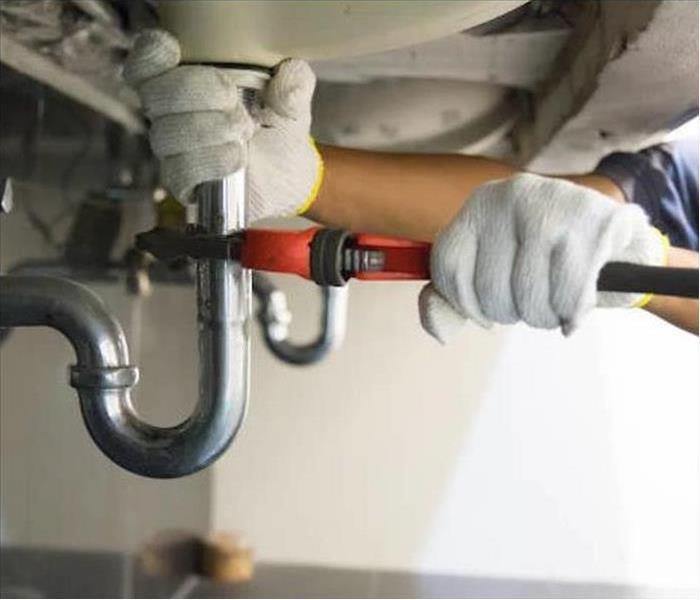How to Know If Your St. Charles Home Has Plumbing Issues
3/7/2023 (Permalink)
Water damage due to a plumbing issue in your St. Charles home can be life-changing. But there are some common signs that homeowners can look for, and steps they can take, to help avoid a major water issue at home.
Consider this example:
A homeowner and his family head off for a three-week vacation. While they’re away, a minor toilet leak grows, until it reaches a pace of three gallons of water per minute. By the time the homeowners returned from their three-week vacation, the unaddressed leak had poured more than 30,000 gallons of water into their home. The water ruined furniture, fixtures and irreplaceable family valuables, and rendered the property virtually uninhabitable for an extended period of time.
But this is just a cautionary tale. The following guidance is meant to help you learn about the potential water issues from common plumbing problems and how you can take steps to help prevent disaster.
Causes For Plumbing Problems
Plumbing issues can occur anywhere in your home. Frequently, lack of maintenance is the root cause of these problems. However, other causes can include:
- Manufacturing and design defects.
- Installation errors.
- Exposure to cleaning products (for example, by storing chemicals under the sink or by cleaning surfaces of plumbing components).
If caught early, many plumbing problems can be addressed before serious damage occurs. For this reason, regular inspection of your home’s visible plumbing parts can be critical. Knowing the lifespan of parts and appliances is also important, as is properly maintaining the other parts of your home and its features and systems.
Signs to Look For
Want to help prevent plumbing complications from damaging your home and potentially resulting in expensive property damage or loss? Start by visually inspecting your plumbing on a regular basis. Look for drips and slow leaks. Be sure to check the areas surrounding your pipes as well. If you see water damage on cabinetry or other nearby materials, there may be an active leak that you’ll want to locate.
Your entire home plumbing system may not be visible, but there are certain places in your home where you can readily inspect plumbing components:
- Under sinks and washtubs.
- Inside access panels near showers, sinks or appliances.
- Attachments to toilets, water heaters and appliances.
- Basements and crawl spaces.
You will want to look at any piping, valves and fittings in the areas listed above. Leaks are most common at connection points, so pay close attention to the plumbing connections on faucets, washing machines, refrigerators, dishwashers, water heaters, water filtration systems, shut-off valves and toilets. Your home’s piping system may also have multiple connections between various sections of pipe. Appliances and fixtures themselves can cause problems, so be sure to inspect those as well, and keep up with any regular maintenance recommended by the manufacturer.
The signs of a problem will vary by component. For example, problems in copper piping may look very different from problems in PEX, a common type of plastic piping. In general, you want to look for signs of corrosion, cracking, hazing, discoloration and mineral deposits from a water leak.





 24/7 Emergency Service
24/7 Emergency Service
